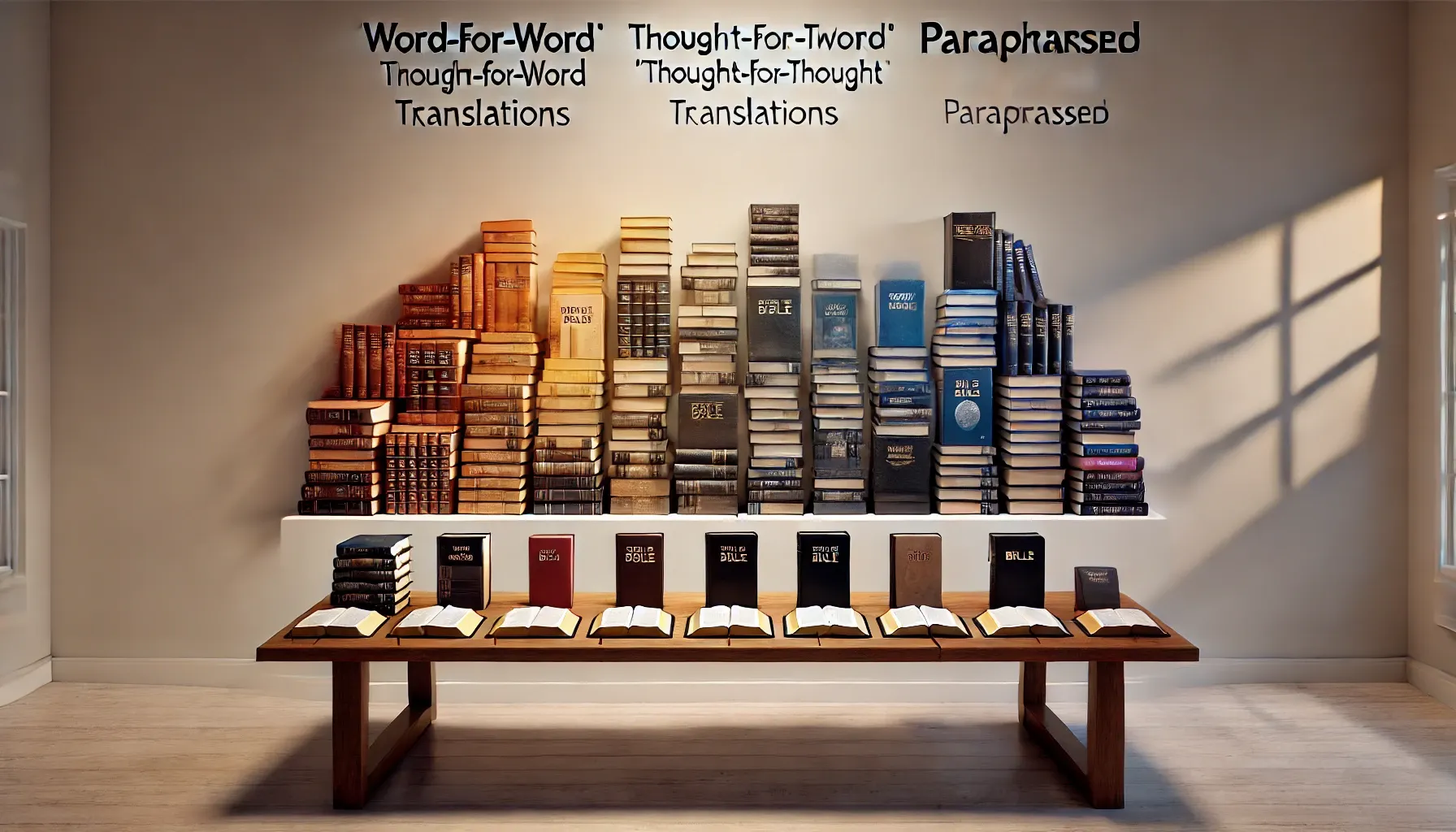Bible Translations 101: Finding the Perfect Fit for Your Faith Journey

If you’re a new or returning believer, you’ve probably had that moment where you walk into a bookstore or open an app and realize… there are so many versions of the Bible. Cue the wide eyes and slight panic: "Which one do I choose?" That’s exactly where I found myself when I came back to studying the Bible in earnest. I was most comfortable with the Christian Standard Bible (CSB) and New American Standard Bible (NASB), but I’ve also recently added a Filament-enabled Bible in the New Living Translation (NLT) to my collection. (By the way, the Filament app is a game-changer—it provides fantastic study resources right on your phone or tablet!)
When I was first born again, I gravitated toward the New International Version (NIV). But when I returned to the faith, it didn’t quite resonate the same way. That’s when I started exploring other translations, and let me tell you, I was blown away by the sheer variety. Each version has its strengths, but knowing where they fall on the spectrum of translations can help you make an informed choice.
The Bible is one of the most widely translated books in history, with versions designed to meet various needs, whether it’s deep study or easy reading. But with so many options, it’s easy to feel like you’re at a buffet with too many choices. Should you grab the filet mignon of translations or settle for something more like spiritual mac and cheese? Let’s explore the spectrum of translations—from Word-for-Word to Paraphrased—and figure out what’s best for you.
At one end of the spectrum, we have Word-for-Word translations (also known as Formal Equivalence). These translations are the sticklers for accuracy, aiming to match each word in the original Hebrew, Aramaic, and Greek texts as closely as possible. Think of these as the honor students of Bible translations. They’re precise but can sometimes feel a bit formal. Examples in this category include the English Standard Version (ESV), New American Standard Bible (NASB), and King James Version (KJV). Of course, these are just a few—there are other excellent translations in this group that take their job seriously too.
In the middle, we find the Thought-for-Thought translations (or Dynamic Equivalence). These translations are like the friendly interpreters at a foreign film festival: they’re more interested in getting the meaning across than in sticking to rigid word order. The goal here is to strike a balance between accuracy and readability. Examples include the New International Version (NIV), Christian Standard Bible (CSB), and New Living Translation (NLT). Again, this isn’t an exhaustive list, but these translations are reliable options if you want something that’s easy to read without drifting too far from the original intent.
At the far end of the spectrum, we have the Paraphrased translations, which aim to make the Bible super accessible and engaging. These versions often feel like a friendly chat over coffee. However, they do take some creative liberties, which can lead to potential theological pitfalls. While paraphrases like The Message (MSG), The Living Bible (TLB), and the Good News Translation (GNT) are popular and engaging, it’s best to use them as a supplemental resource after you’ve built a strong foundation with more accurate translations.
Now, here’s the tricky part. While paraphrased translations are great for capturing big ideas, they can inadvertently stray from the original meaning. The Bible explicitly warns against altering its message. Revelation 22:18-19 states, “I warn everyone who hears the words of the prophecy of this scroll: If anyone adds anything to them, God will add to that person the plagues described in this scroll. And if anyone takes words away from this scroll of prophecy, God will take away from that person any share in the tree of life and in the Holy City, which are described in this scroll” (NIV). No pressure, right?
So how do you know which translation to trust? Credible translations are typically the result of collaborative efforts by teams of scholars who specialize in ancient languages, cultural contexts, and theology. This rigorous process minimizes bias and ensures faithfulness to the original manuscripts. In contrast, paraphrased translations are often the work of one person, which can unintentionally introduce personal interpretations. That’s why it’s important to rely on reputable translations when studying the Bible seriously.
For new believers, a thought-for-thought translation like the NIV or CSB is a great place to start. These versions are easy to read and maintain solid accuracy. For those ready to dive deeper, word-for-word translations like the NASB or ESV provide a closer look at the original text. Once you’ve developed a strong biblical foundation, paraphrased translations can offer fresh perspectives, but they’re best approached with discernment.
Tim Wildsmith has a YouTube channel where all he does is talk about Bibles. His mission is to help Christians find the version that works best for them. He teaches all about the different versions, and even gets down to the nitty gritty on construction of the Bibles and how the scripture is supported by notes and commentaries and why he recommends certain ones more highly than another. In the video below, he talks about biblical versions to help clarify things a bit more.
Time mentions others who also look at the spectrum of translations. While Tim doesn't place paraphrased versions in their own category, others do consider them as a separate category of translation.
Choosing the right Bible translation is essential for both personal growth and doctrinal understanding. Think of it like building a relationship: you want accuracy in communication (hello, word-for-word) but also accessibility (thank you, thought-for-thought). And while paraphrased translations are like a fun text message, they shouldn’t replace deep, meaningful conversations.
No matter where you are in your faith journey, the important thing is to keep digging into God’s Word. After all, it’s not just about which version you read—it’s about letting the truth transform your heart.
Reflection Question: What translation do you currently use, and how does it help you understand and apply God’s Word?
